Korean Barbecue
A Real Tradition that you can enjoy
The Korean Barbecue has become one of the most popular Korean styled restaurants in the world. Korean barbecue restaurants serve meat and vegetables that you cook yourself on a grill in the middle of the table. The grill is often filled with hot coals and an extractor is placed over each grill to remove the smoke.
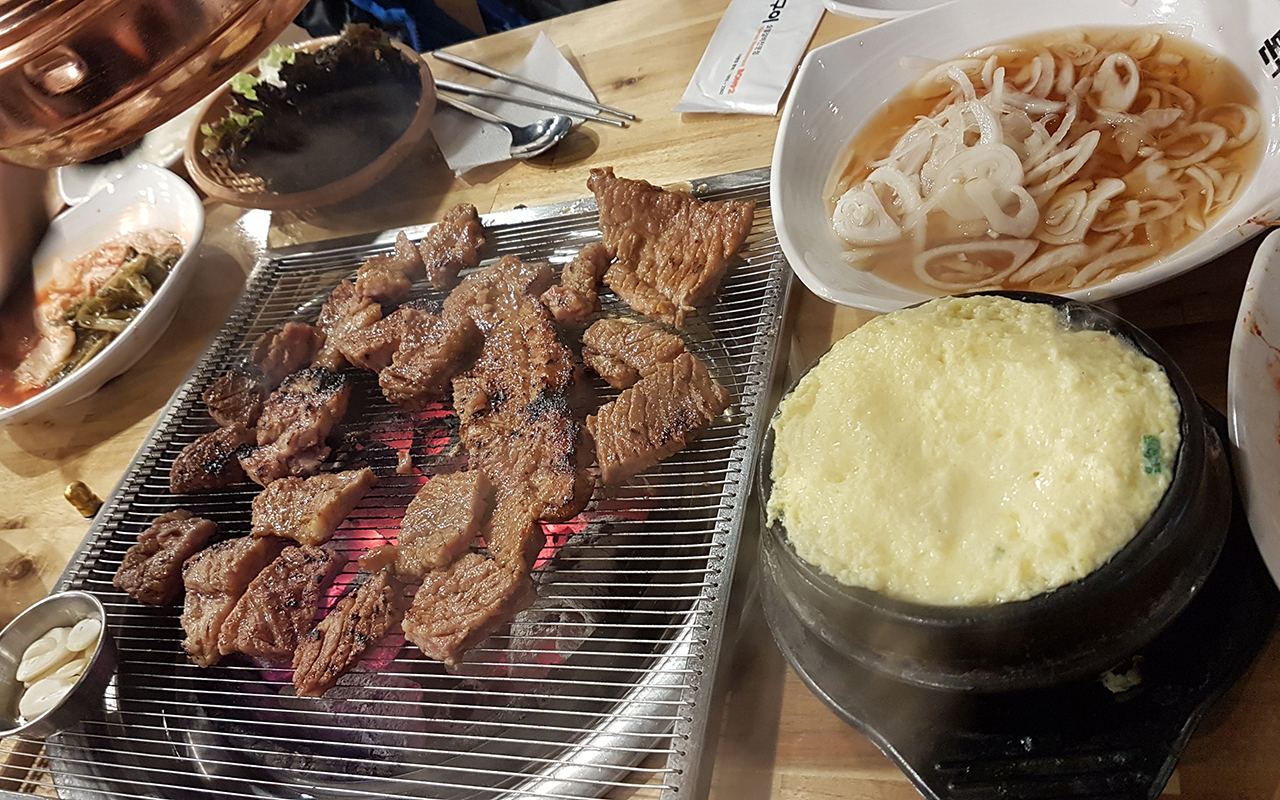 |
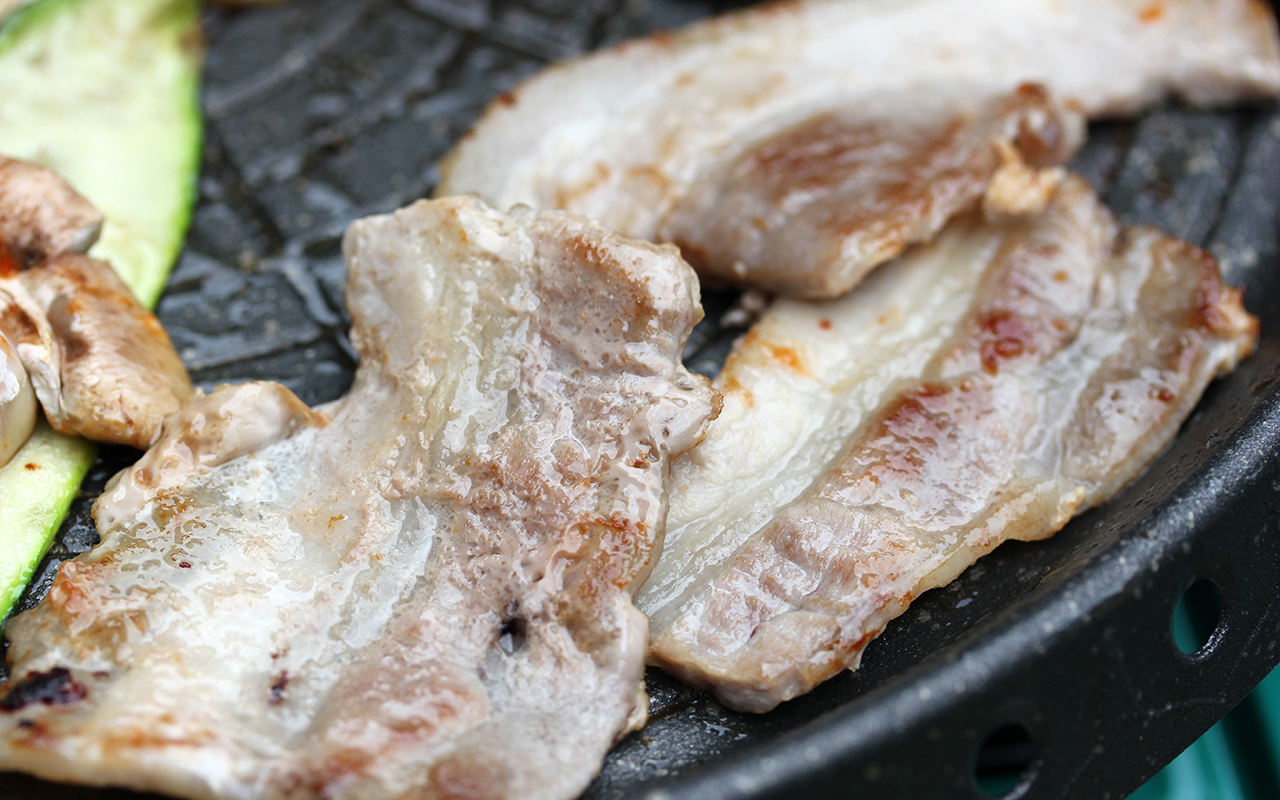 |
The most popular dishes are pork belly (samgyupsal), Galbi (spare ribs), and Bulgogi (beef). What makes Korean barbecues taste so great are the marinades and sauces. The meats are often marinaded in Galbi sauce or bulgogi styled sauces with gochujang and red pepper powder. Samgyupsal is often cooked without marinade but is often served with lettuce and Ssamjang sauce.
Korean Barbecue at Home
You can create an authentic Barbecue at home, and I am going to show you how.
I have used a single Gas burner, with a hot plate to recreate the barbecue. You can decide what meats and vegetables you want to use, as a guide I recommend that meat is cut as thinly as possible. If you don’t have a hot plate, you can cook the meats on a traditional coal or gas barbecue as well.
I have used the following ingredients:
- Pork Belly
- Courgettes
- Mushrooms
- Kimchi
- Gochujang sauce
- Ssamjang sauce
- Black pepper
- Sliced Garlic
- 2 Eggs
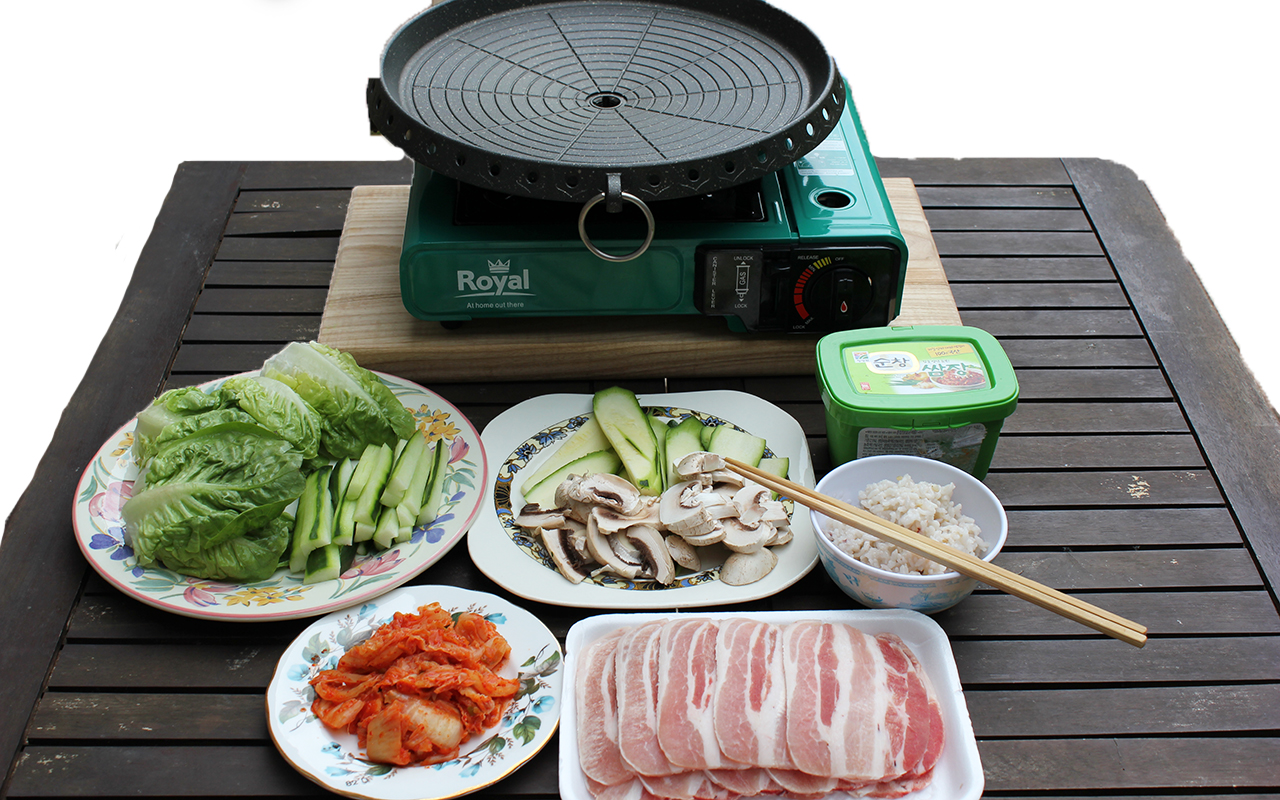 |
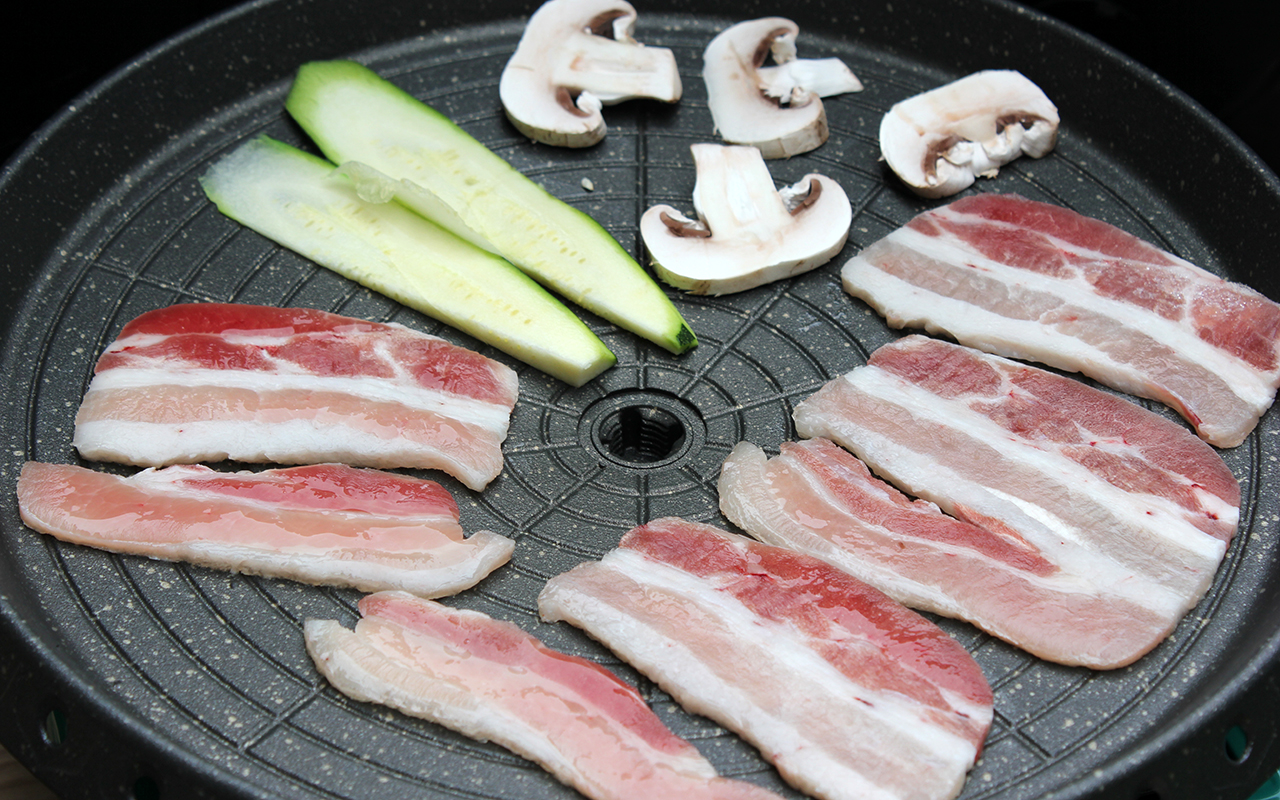 |
This is then served with some lettuce and cucumber to make some wraps, rice and a miso soup. You can though use a variety of meats and vegetables really depending on what you have or what you like.
Preparation
To get the true Korean experience you want to be able to eat the food as its cooked, literally straight from the barbecue. Therefore, it’s important to prepare your rice, vegetables, salad and sauces in advance so you can eat straight away.
The meats should generally be cut as thin as possible. The ribs can either be cooked whole or in small pieces.
Marinating the meats – If you want to marinate the meats in advance, I would create a marinade using the following ingredients (soy sauce, minced garlic, sugar, red pepper powder, black pepper), and then mix in a bag with the meat and leave in the fridge for overnight or 2-3 hours.
Salad leaves should be prepared as whole leaves.
Sauces can be put in small dishes or just have teaspoons ready.
Other additions like rice or soups can be served on plates ready to eat.
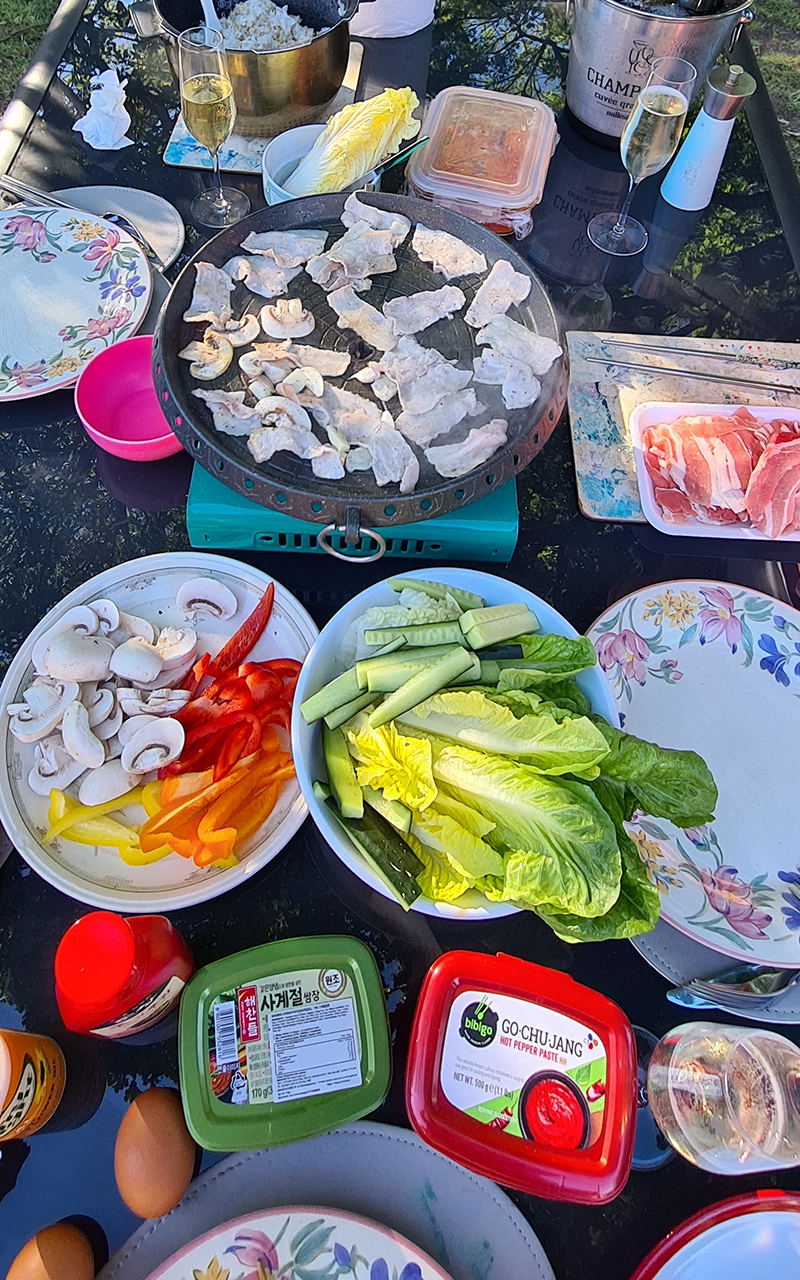 |
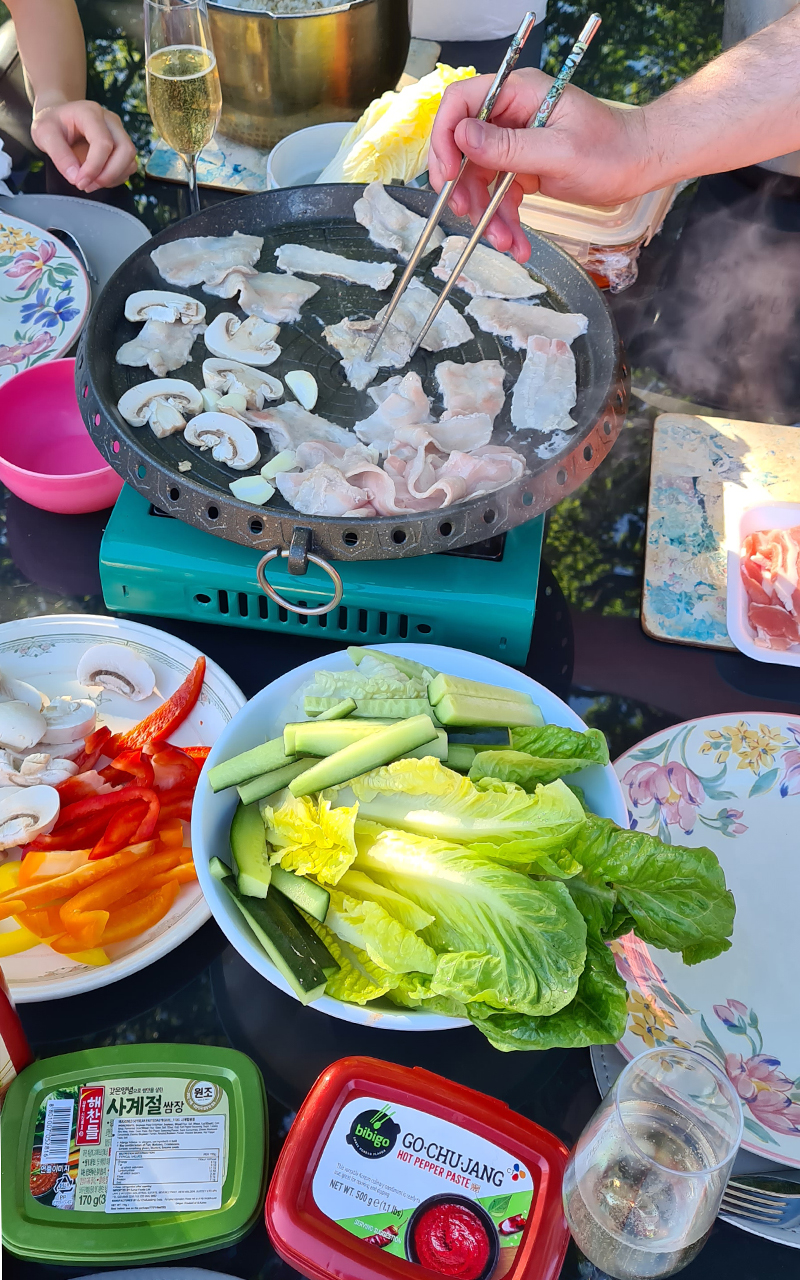 |
Cooking
You want to cook the meat quickly, so put a bit of oil on the plate and put it on a high heat setting.
Once it’s hot, add the vegetables and meat to the barbecue, cook on both sides and if the meat is thin, it should cook very quickly.
Remove from the hot plate and eat straight away. Add more meat to the plate and cook again.
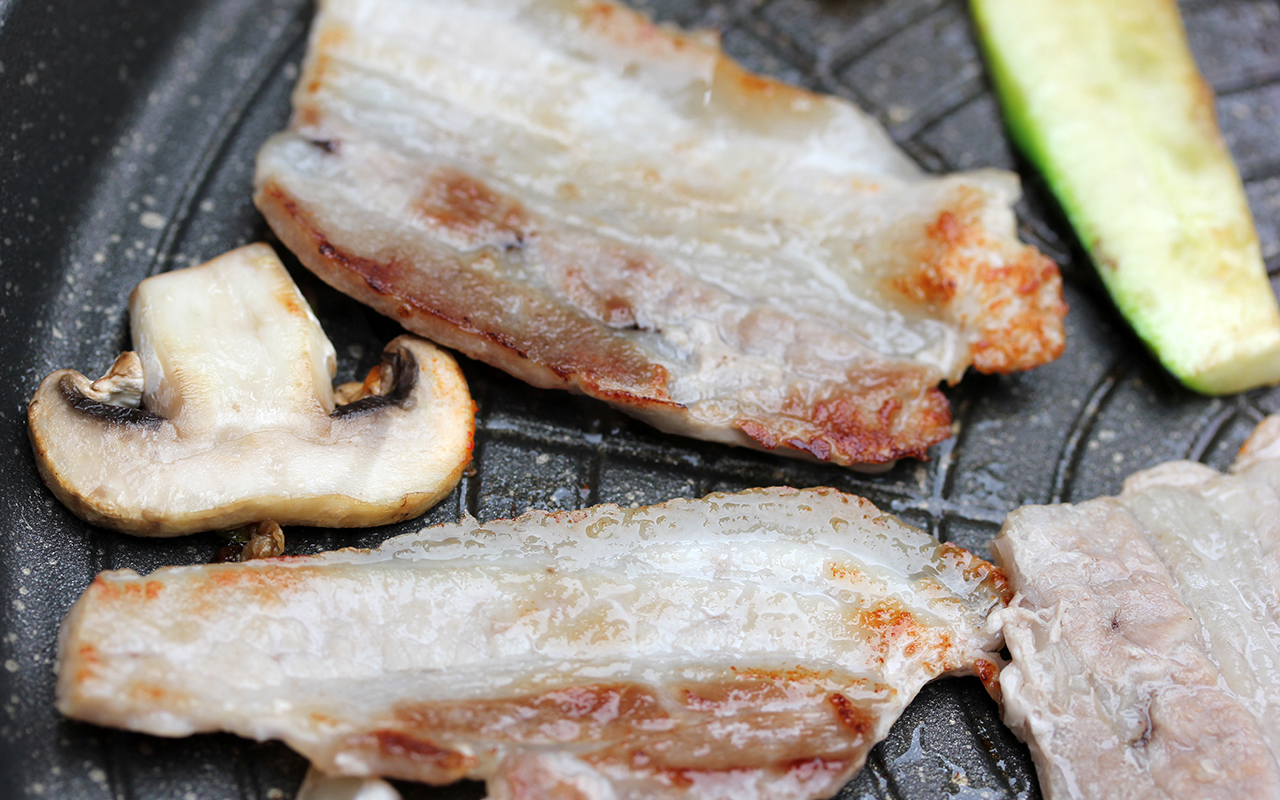 |
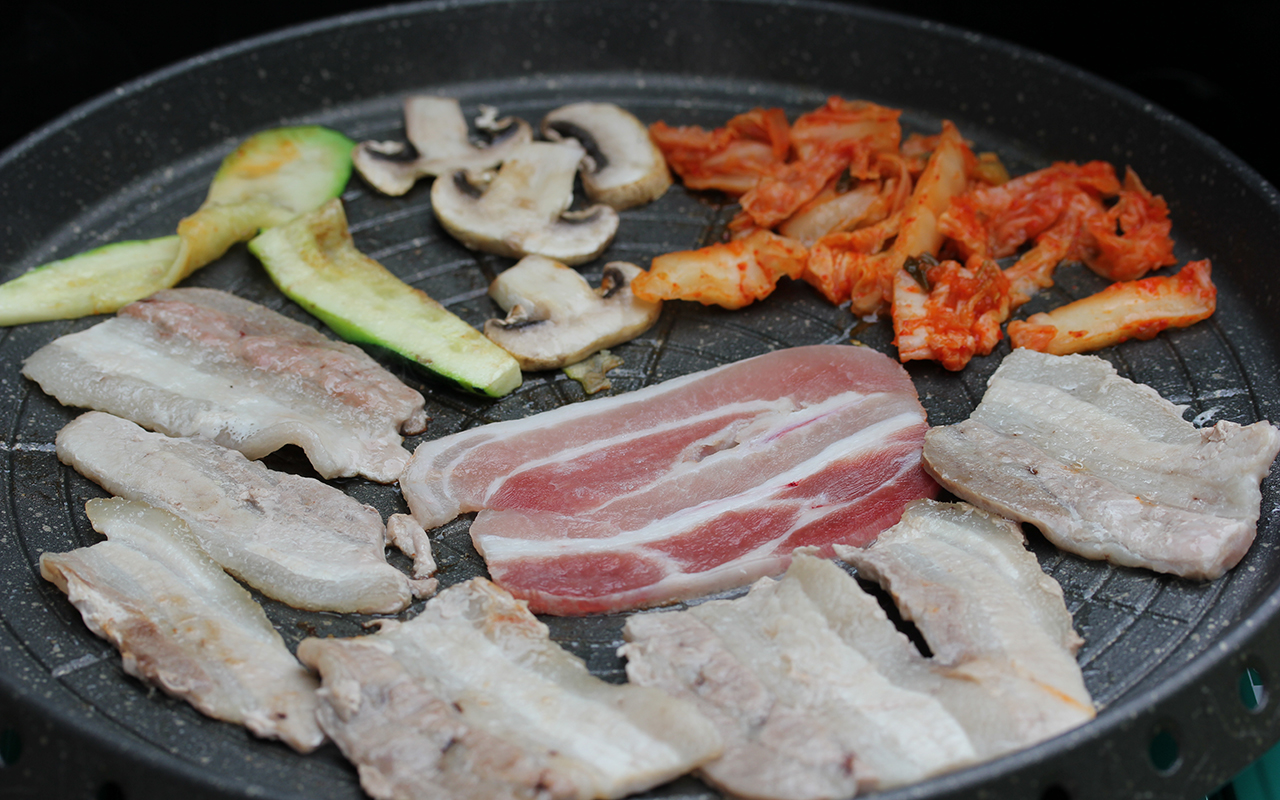 |
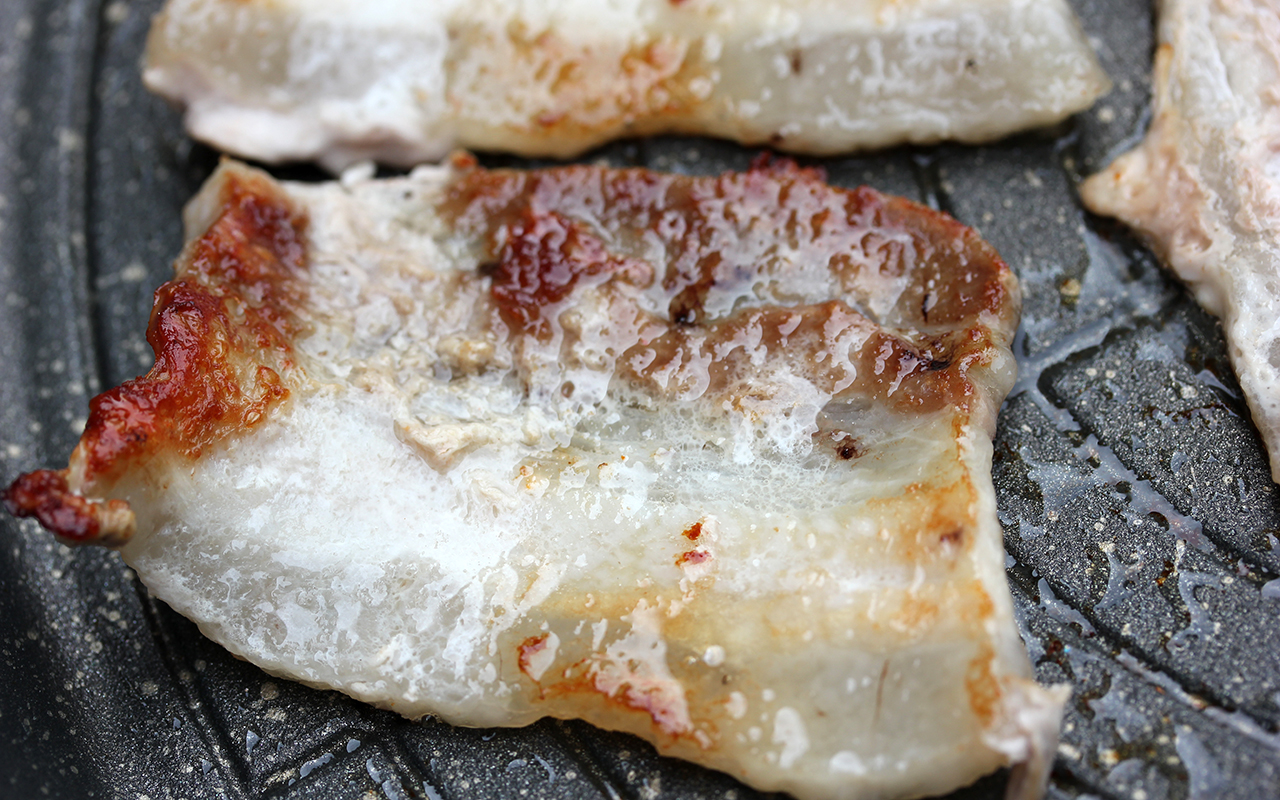 |
 |
Serving/Eating
One of the best ways to enjoy Korean barbecue meat is to create lettuce wraps. Take a lettuce leaf and add some rice and a bit of Ssamjang sauce, add a piece of meat and eat in one bite.
The meat tastes great dipped in either Ssamjang or gochujang sauce too. You can also fry kimchi on the plate and serve with rice, meats, vegetables and sauce again.
I would also recommend putting some sliced garlic on the barbecue, these go great in the lettuce wraps and improve the flavour.
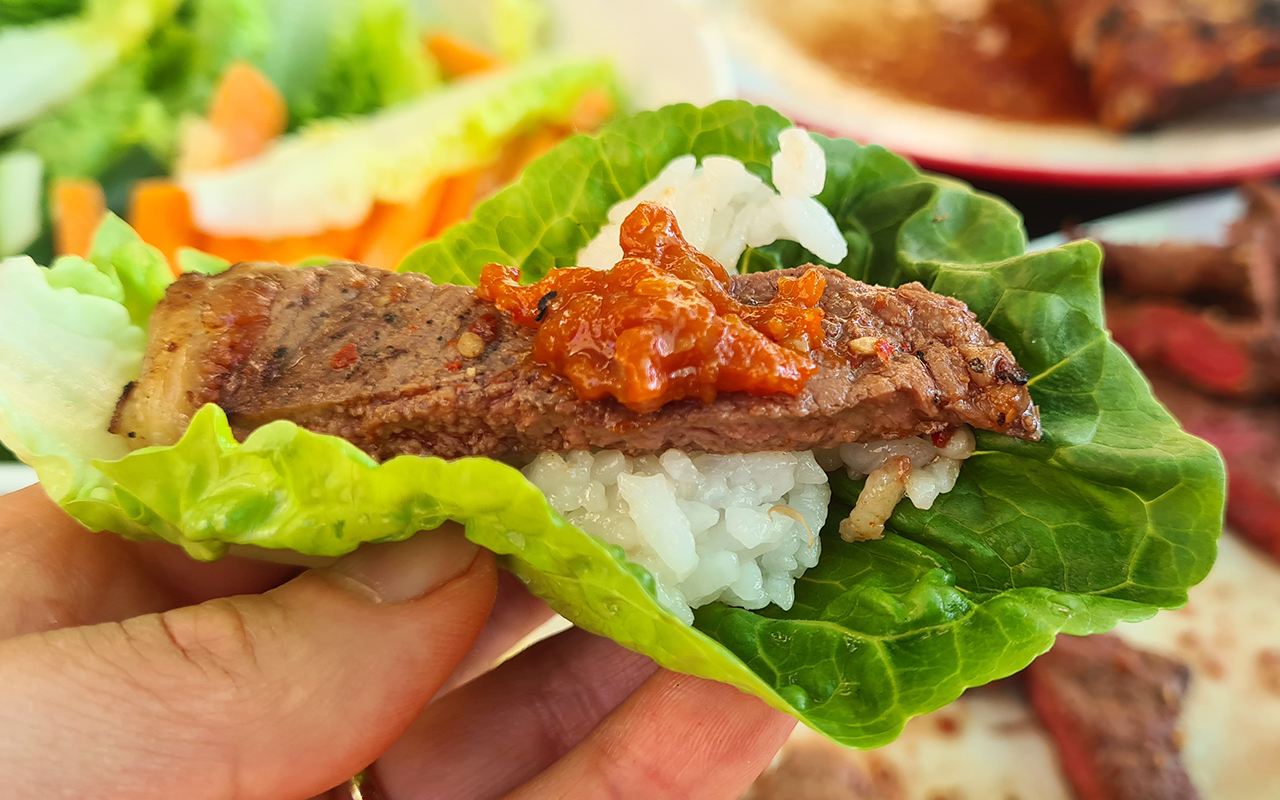 |
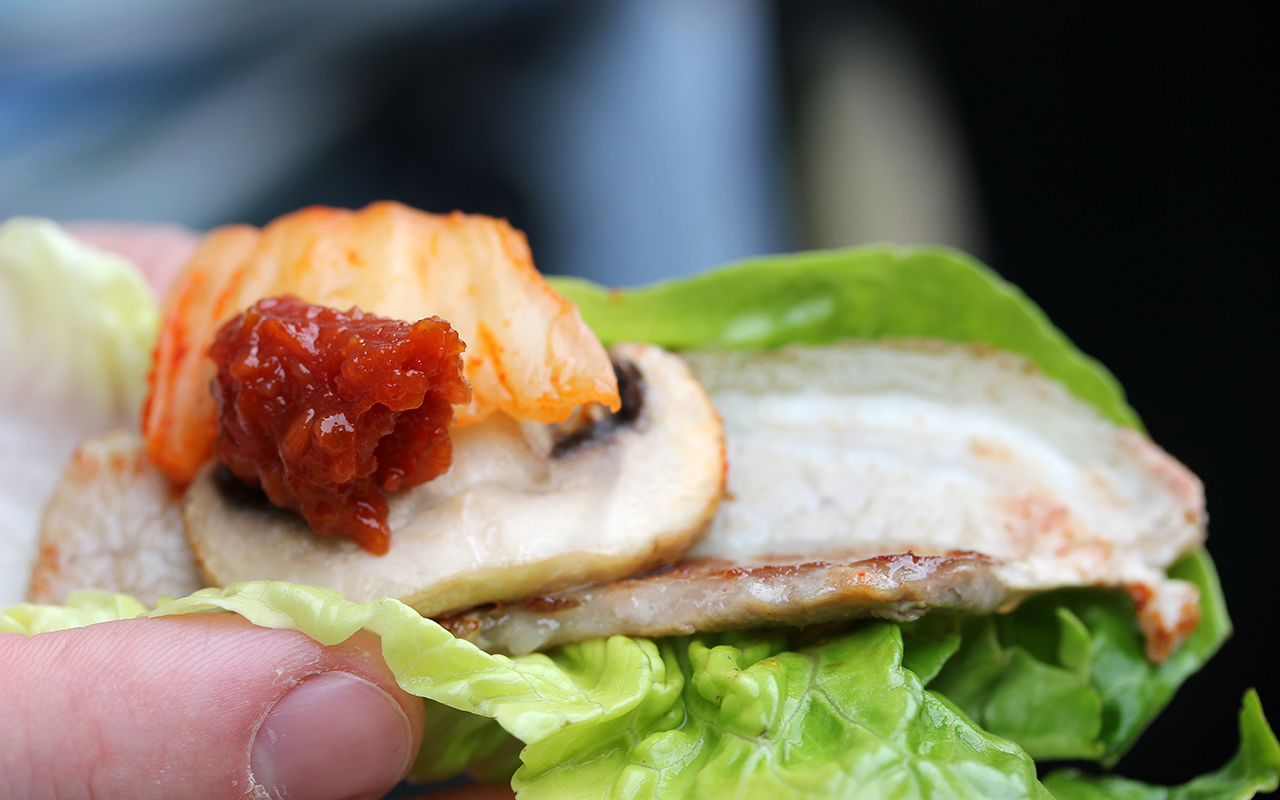 |
Finish touch
Once you have finished cooking the meats on the hot plate, you can add rice to make a fried rice, include kimchi and vegetables and a couple of whisked eggs and allow it to cook for a few minutes for a tasty Kimchi Bokkumbap.
In Korea, we commonly eat Naengmyeon or Daenjang Jjigae(Soy bean soup) after a barbecue
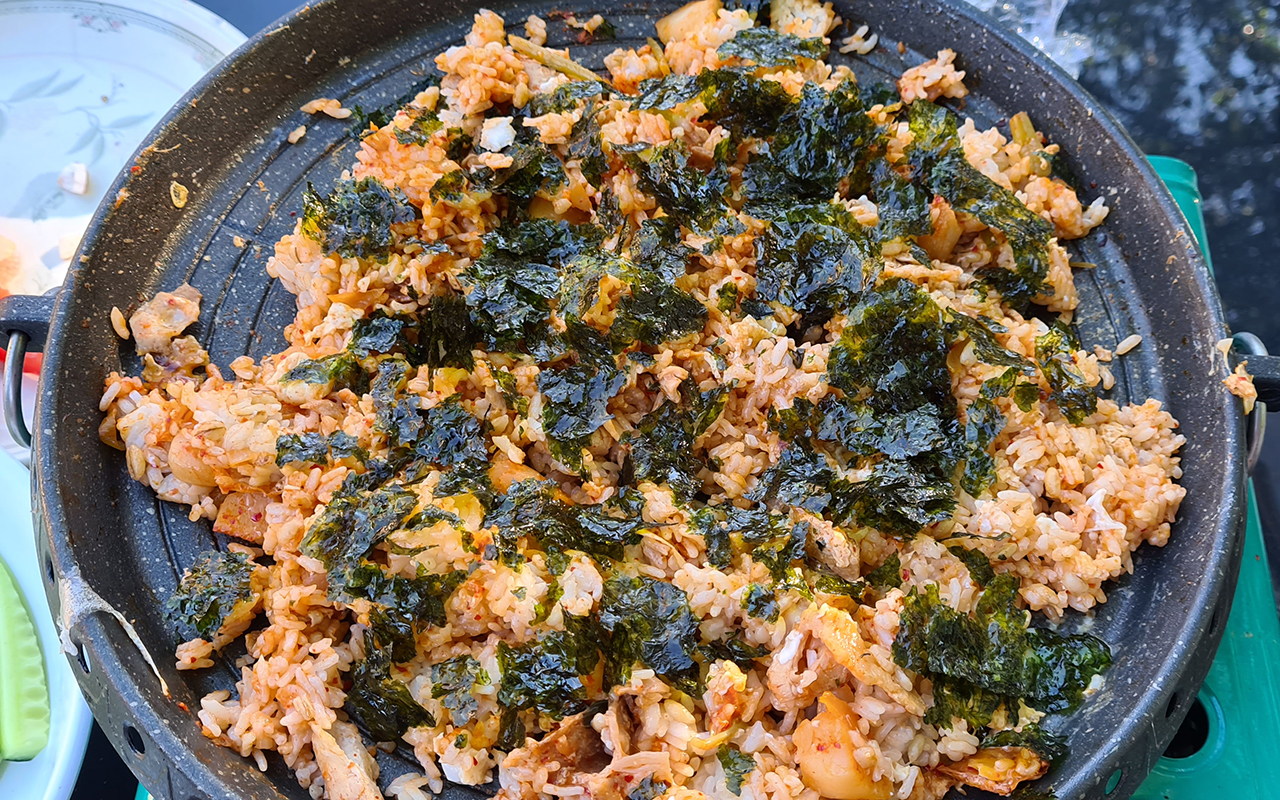 |
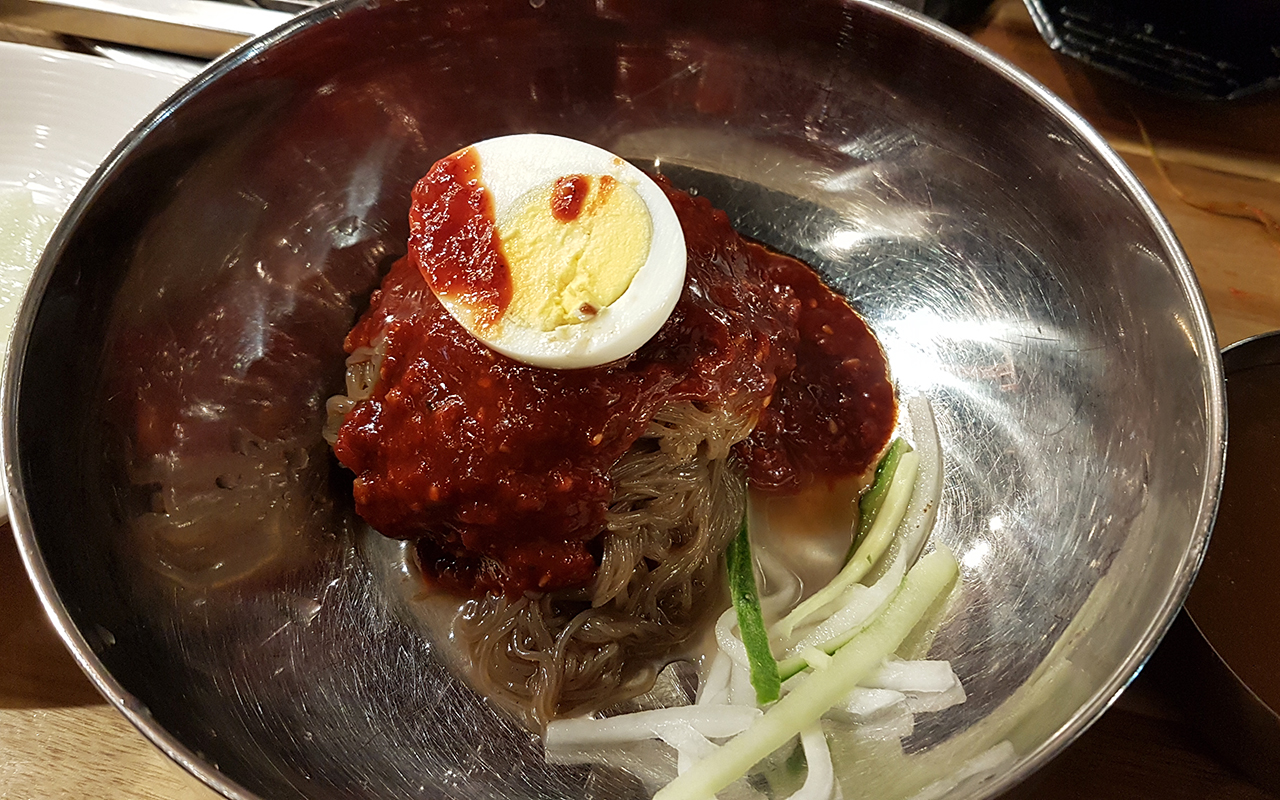 |
Using Normal BBQ
If you have a normal gas or coal barbecue, you can still make a great authentic Korean barbecue.
Cook the marinated or unmarinated on a gas or coal barbecue and serve with Korean sauces like Ssamjang.
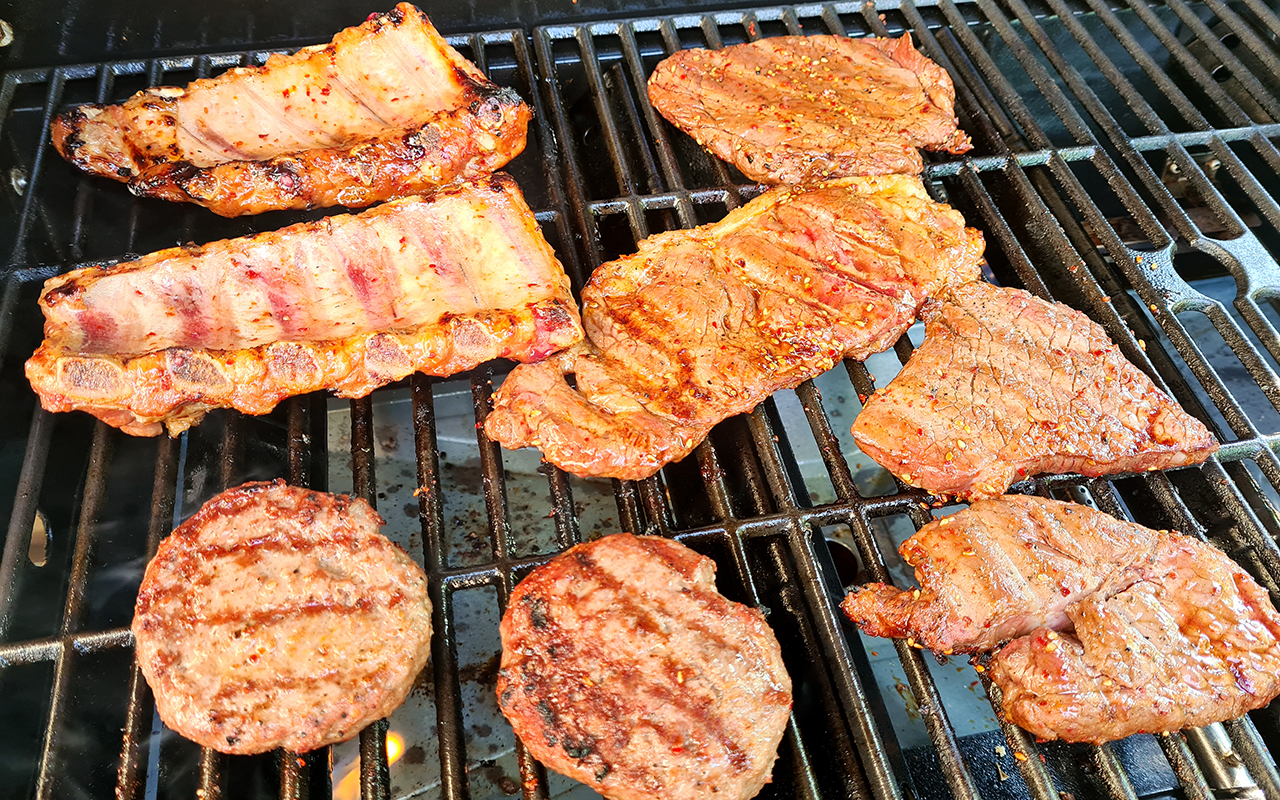 |
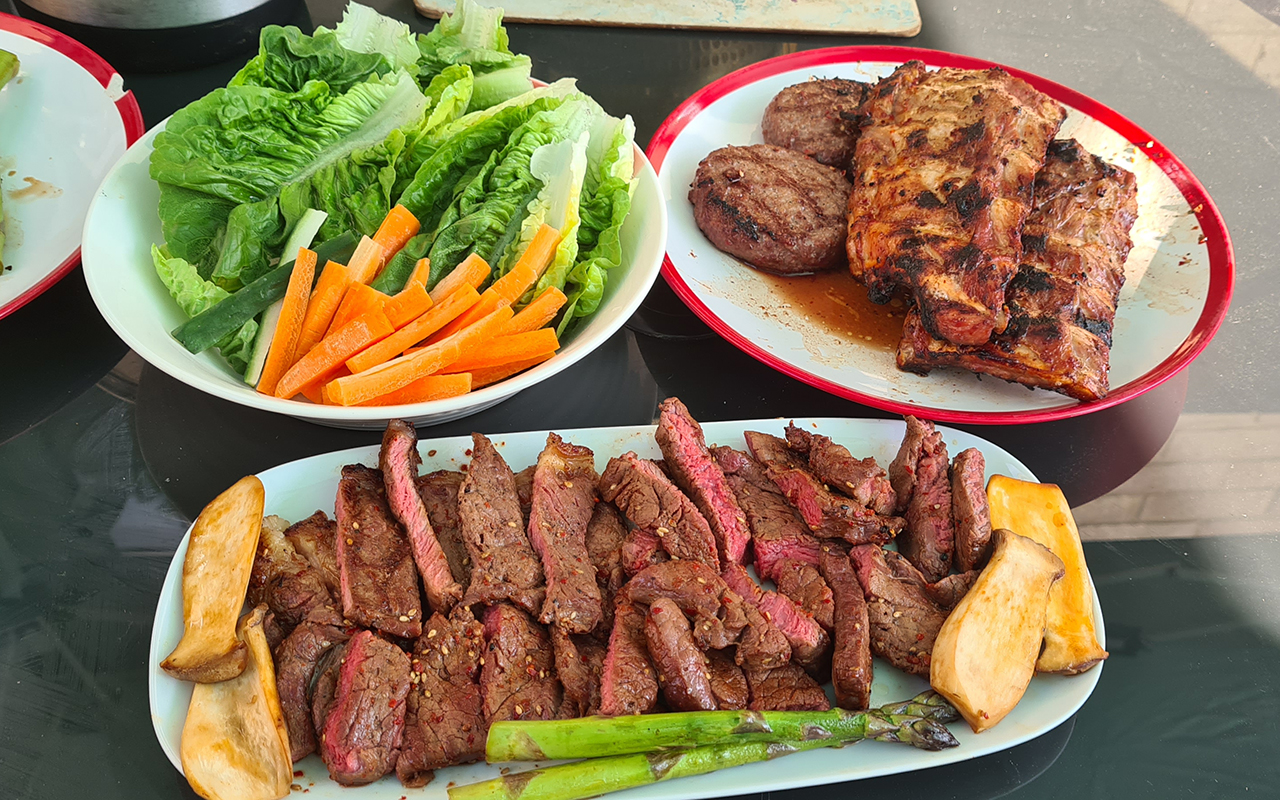 |
Korean Barbecue Restaurants
As mentioned above, Korean barbecue restaurants are becoming very popular and worth trying to visit for the experience and great food.
Korean restaurant experience
In the restaurant, your waiter will place an iron basket filled with fiery charcoals upon which the various meats, seafood and vegetables will be grilled.
You have a choice of marinated and non-marinated meat cuts. For example, marinated beef cuts are called galbi (ribs) and bulgogi while the non-marinated cuts are samgyupsal , chadol baki and anshim gui.
You will then grill the meat of your choice on the grill. You can also add the garlic. Then, when the meat slices are done eat straight from the grill, dip the meat in Ssamjang or make lettuce wraps for a delicious flavour.
 |
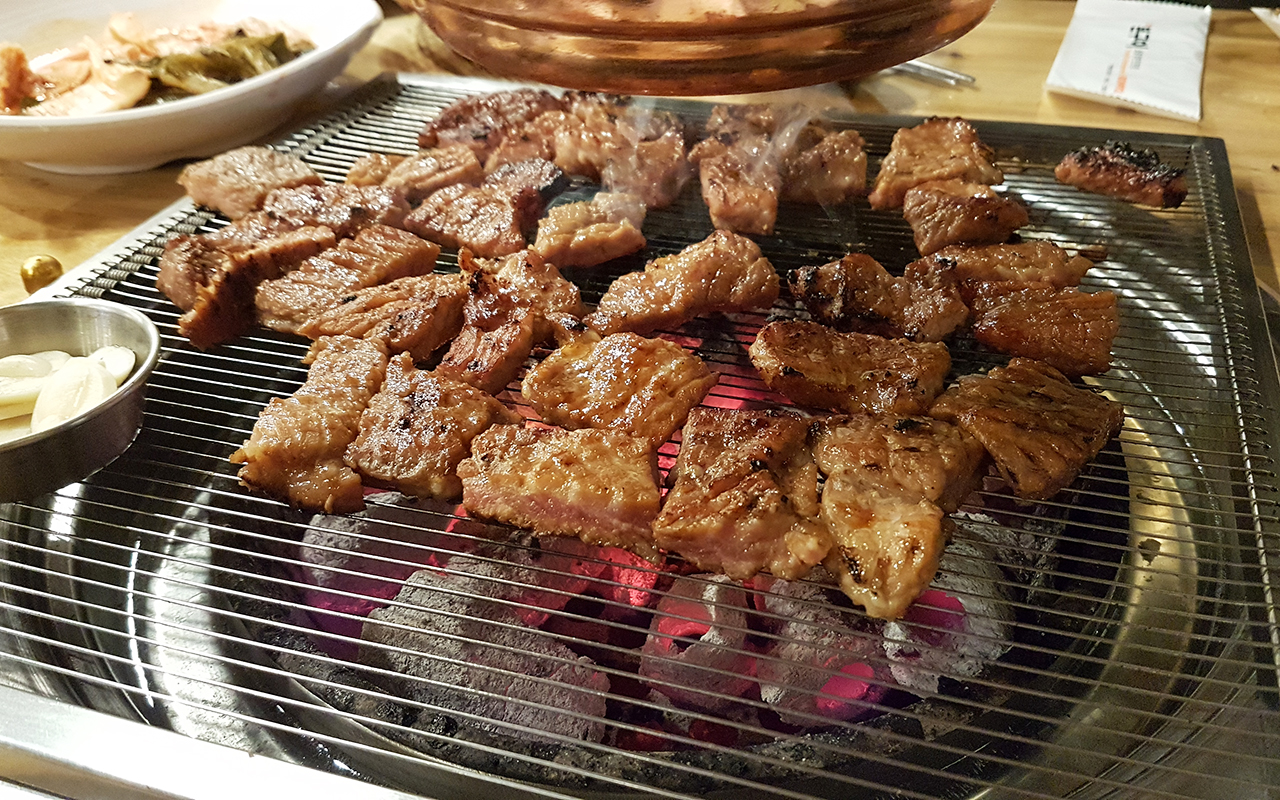 |
Return to Korean Food Homepage
New! Comments
Have your say about what you just read! Leave me a comment in the box below.